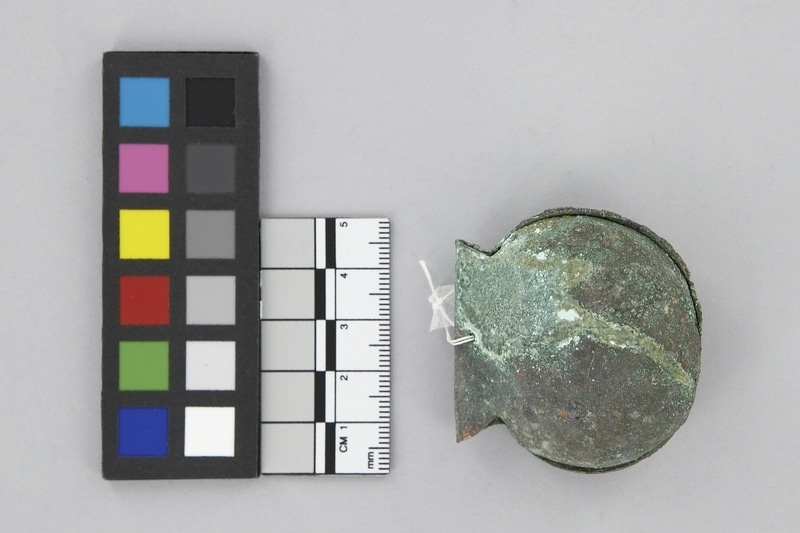Rattle Item Number: Sf741 from the MOA: University of British Columbia


Description
Thin sheet metal in the shape of a bivalve, hinged with a fold. Convex surfaces have many raised bumps. Two small holes for suspension pass through both sides of the hinge. The edges of the hinge flare outwards. There are 2 or more stone pellets inside. Fragments of plain weave fabric with paired threads adhere to both sides.
History Of Use
The shell-shaped rattle is probably a part of a collar-like neckpiece, similar to ones found at Loma Negra. These metalwork rattles have the shapes of human and owl heads (Schaffer, p.c.). It is possible that similar adornments continued to be made by the subsequent Lambayeque and Chimu cultures.
Narrative
Possibly Vicus Style; 0-200 C.E.
Iconographic Meaning
The rattles appear to have the form of a bivalve shell, possibly spondylus, as the raised bumps on the surface resemble this shell. Spondylus is found in Ecuadorian waters and was a valued trade item in Peru over many centuries.
Item History
What
- Name
- Rattle
- Identification Number
- Sf741
- Type of Item
- rattle
- Material
- copper metal, gold metal ?, stone and silver metal ?
- Manufacturing Technique
- hammered, plated ? and embossed
- Overall
- height 2.4 cm, width 5.2 cm, depth 4.9 cm
Where
- Holding Institution
- MOA: University of British Columbia
- Made in
- Peru
When
- Creation Date
- during 200
- Collection Date
- between 1949 and 1966
- Ownership Date
- before May 4, 1981
- Acquisition Date
- on May 4, 1981
Other
- Item Classes
- metalwork
- Condition
- poor
- Accession Number
- 0711/0243